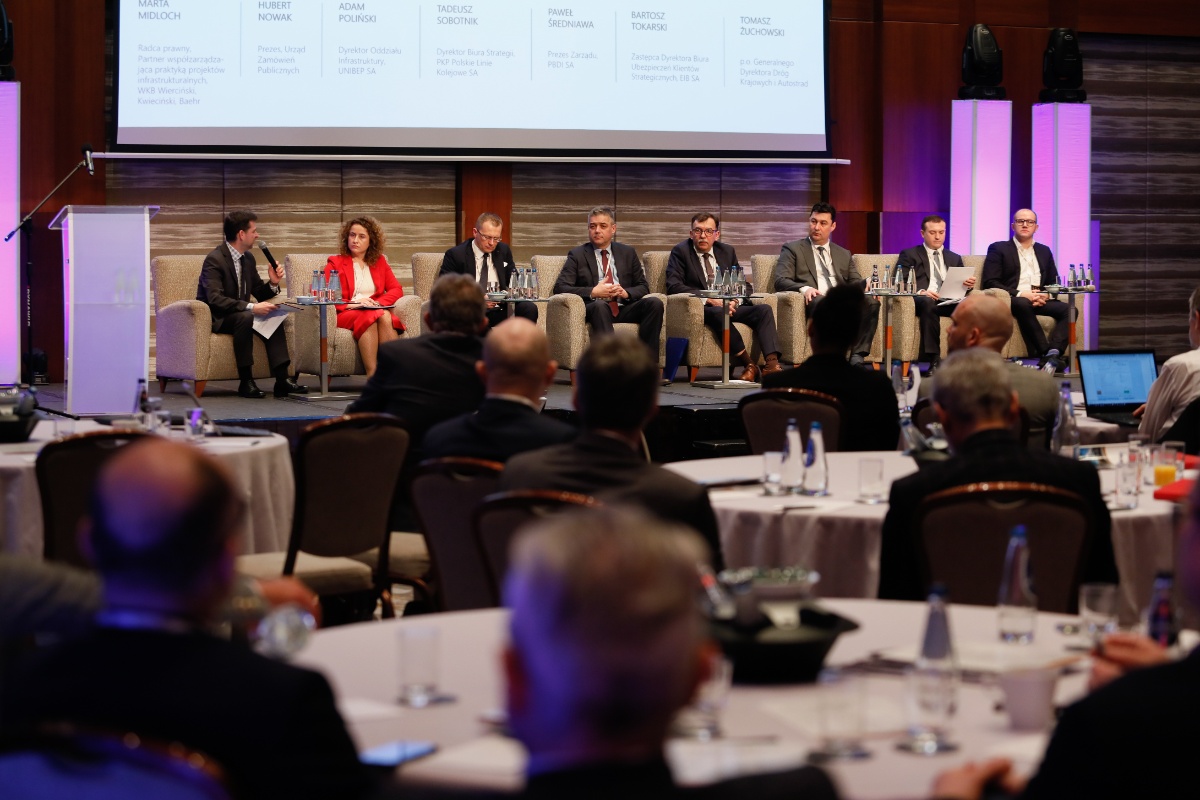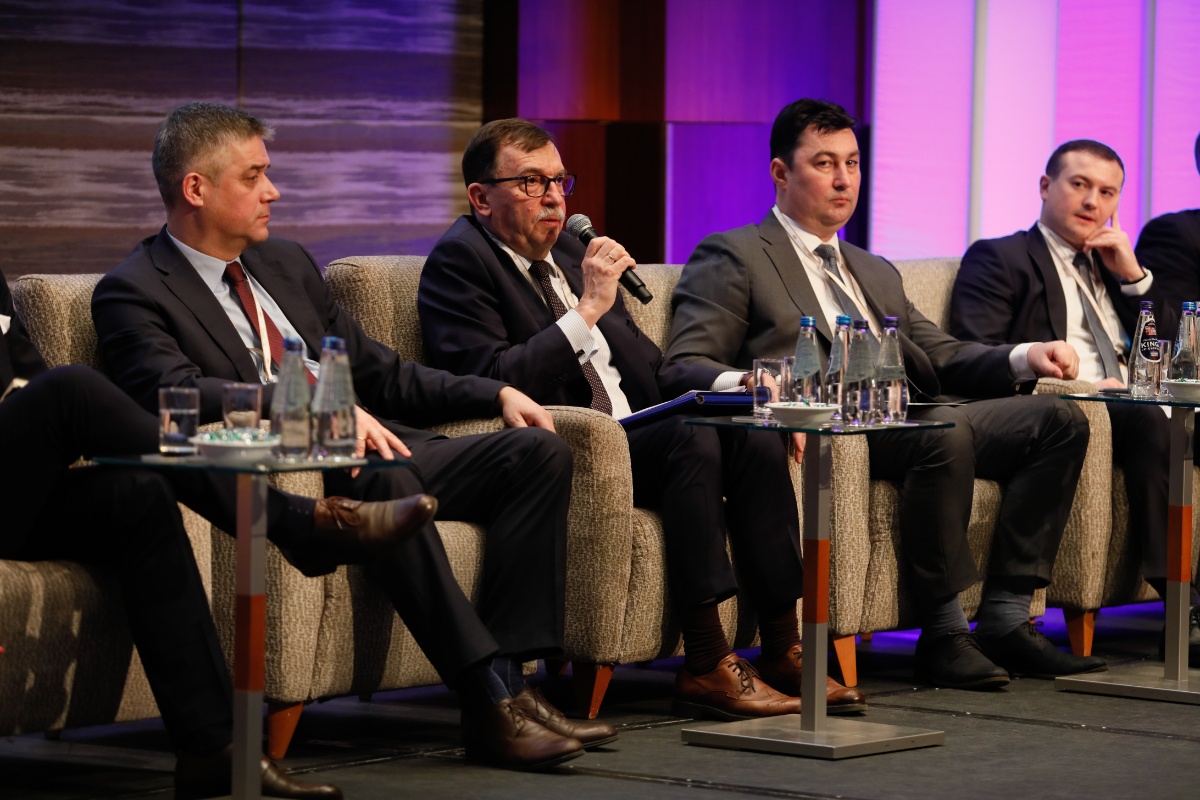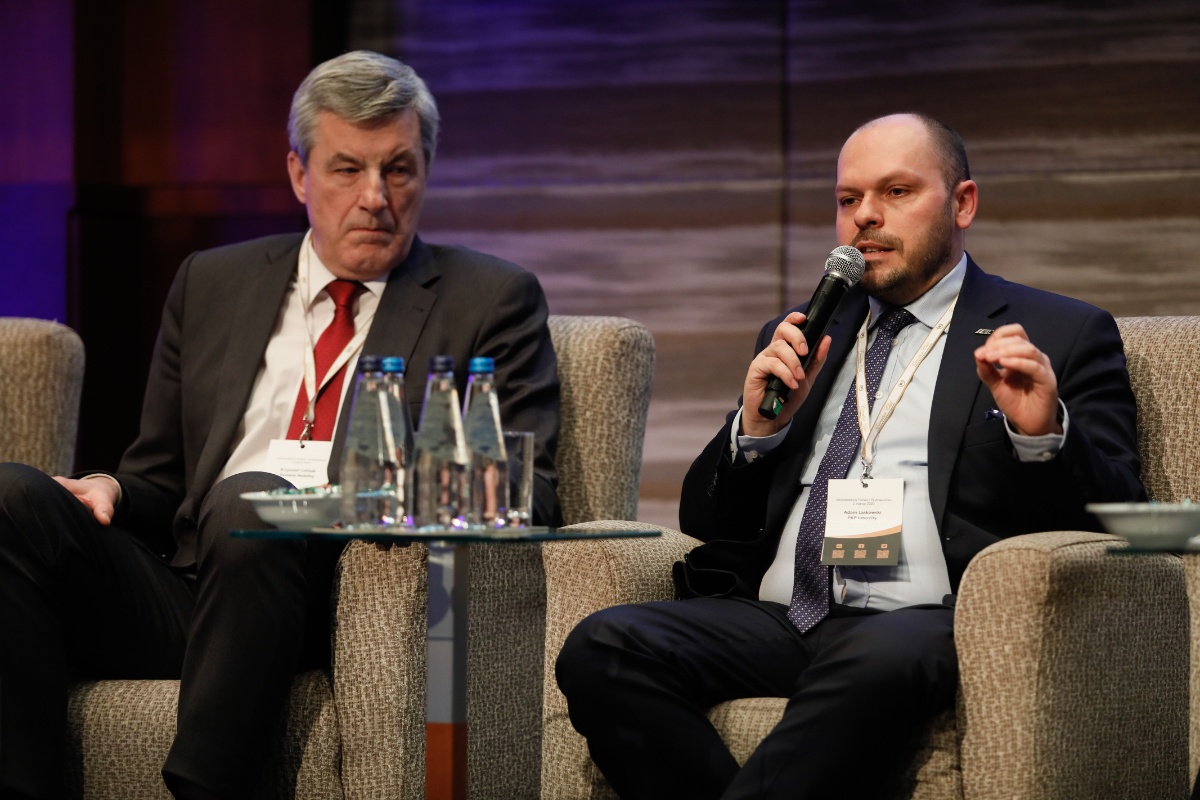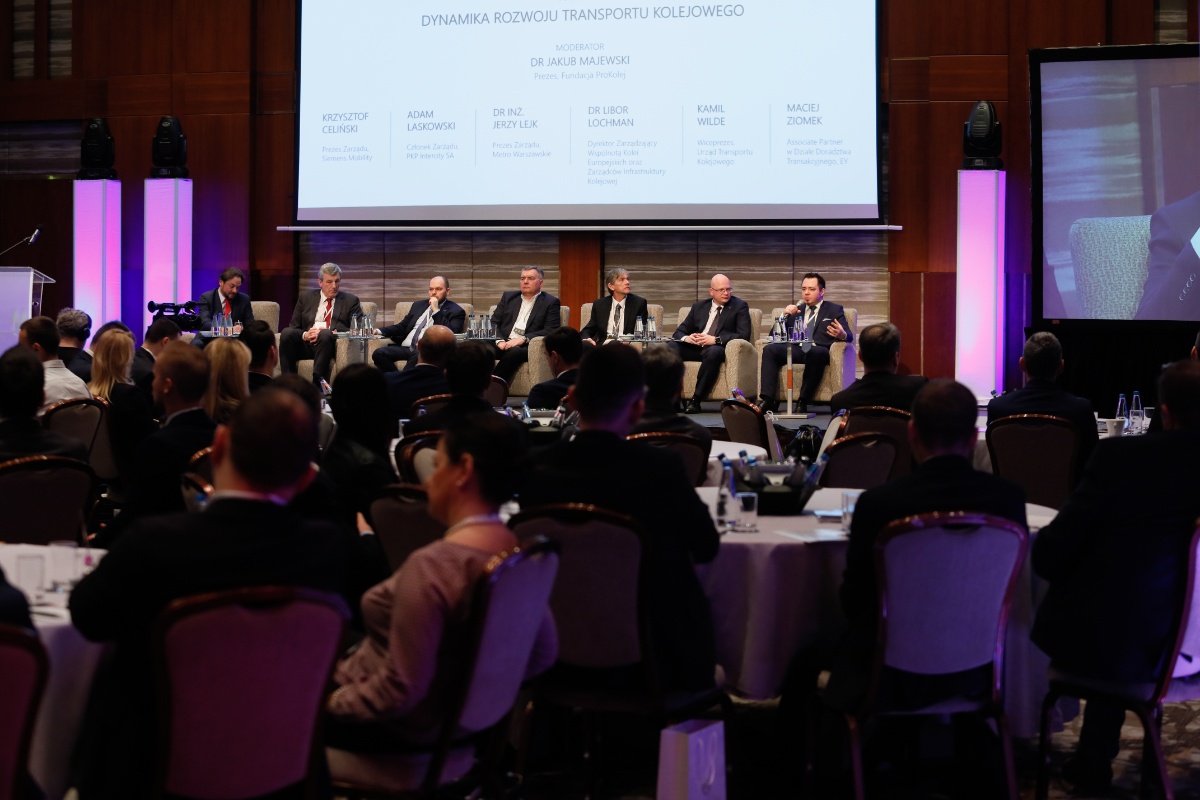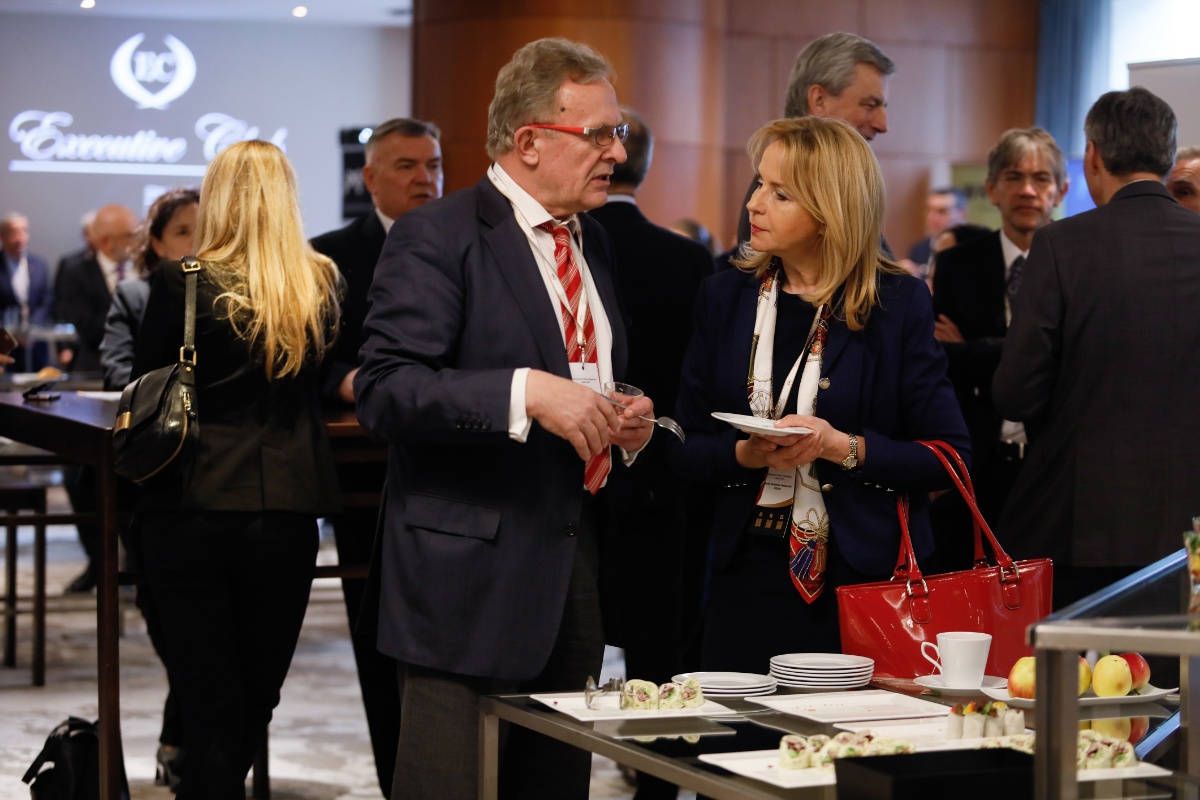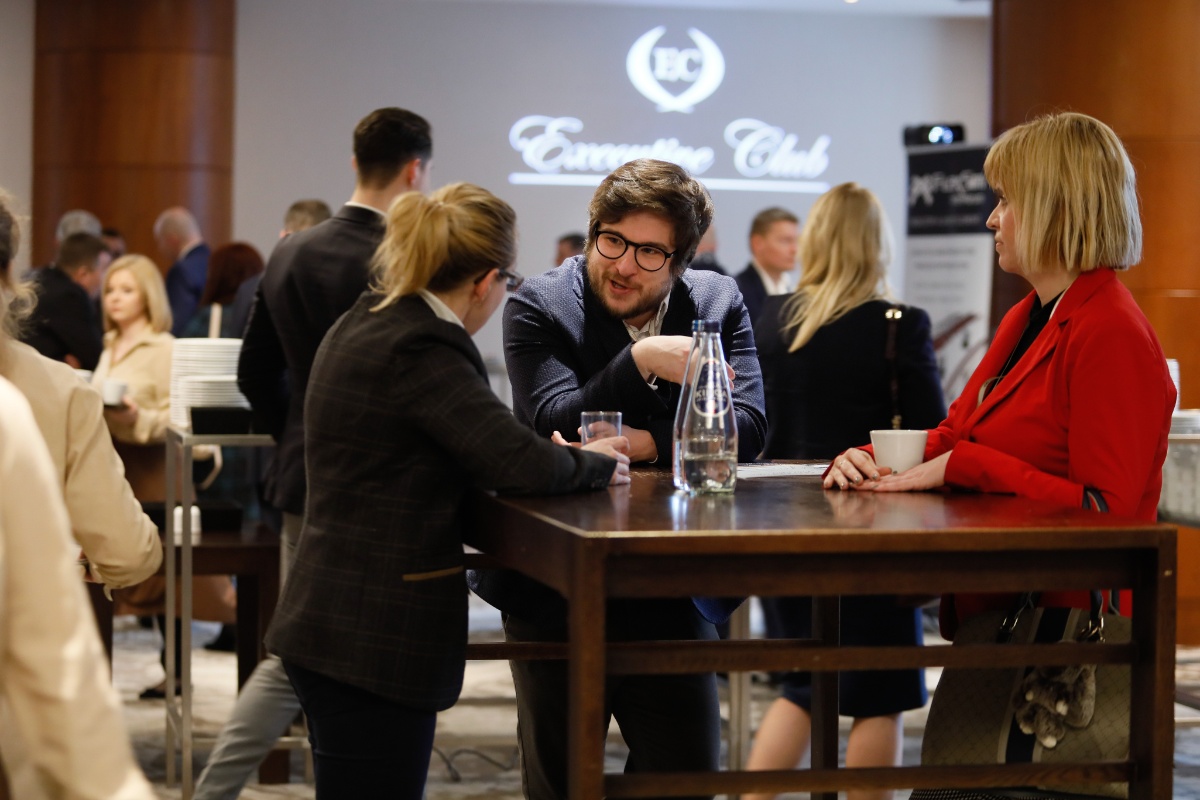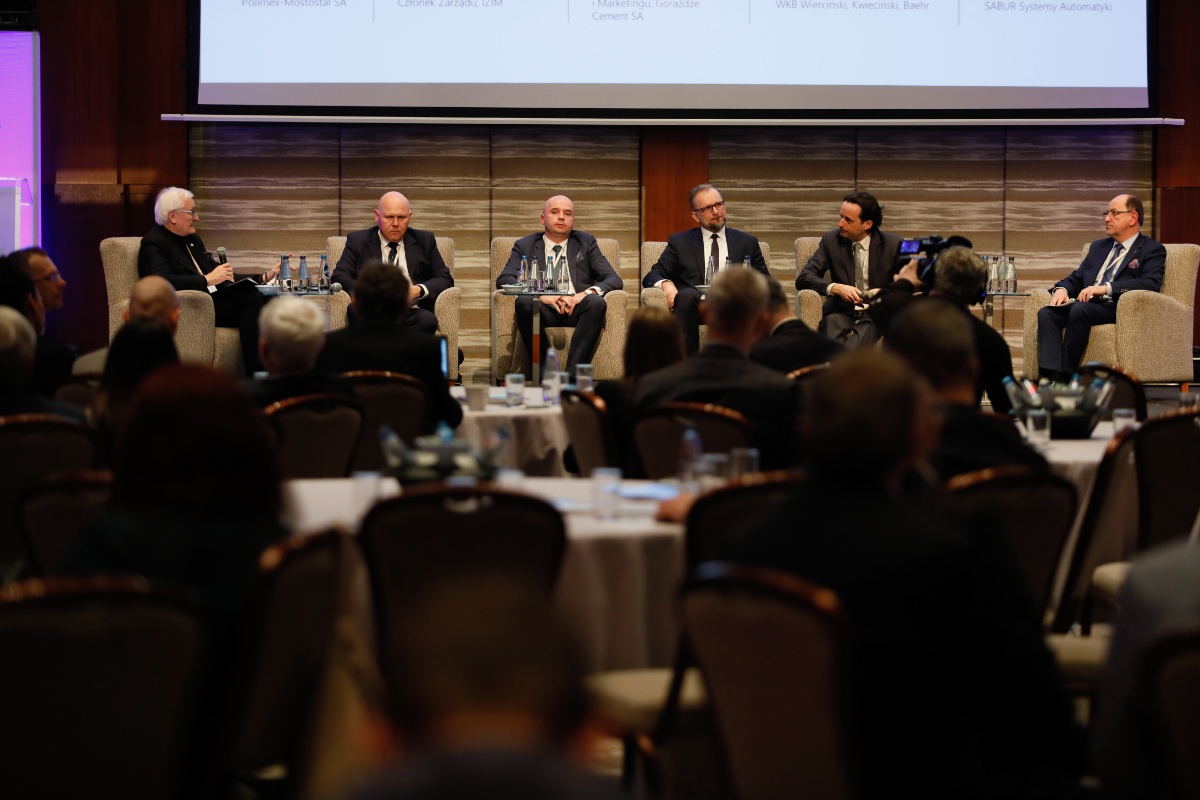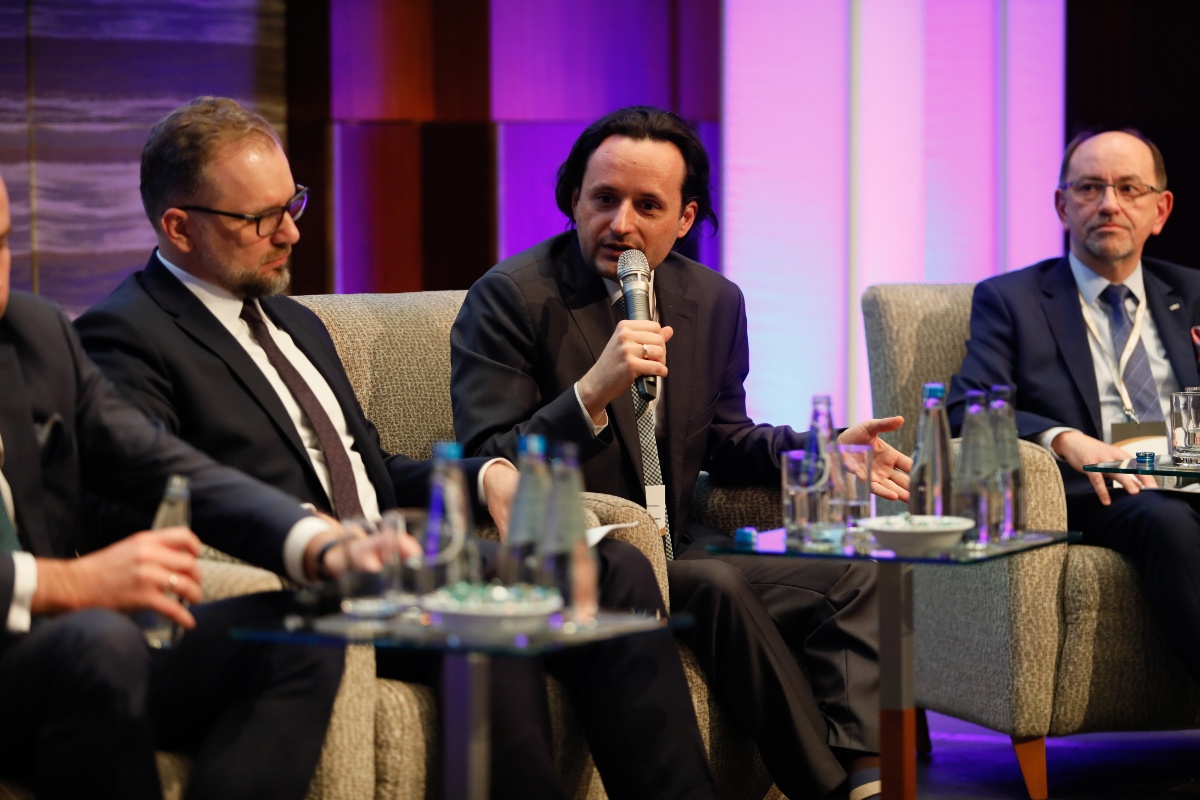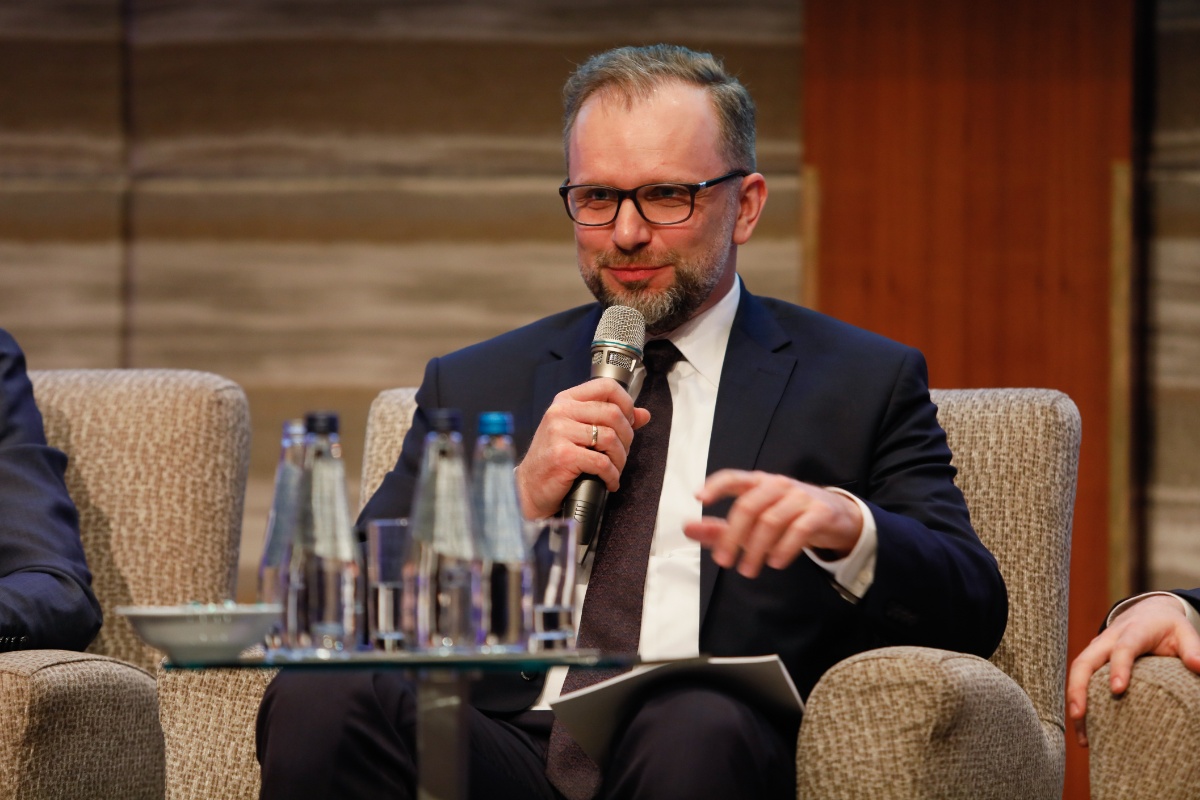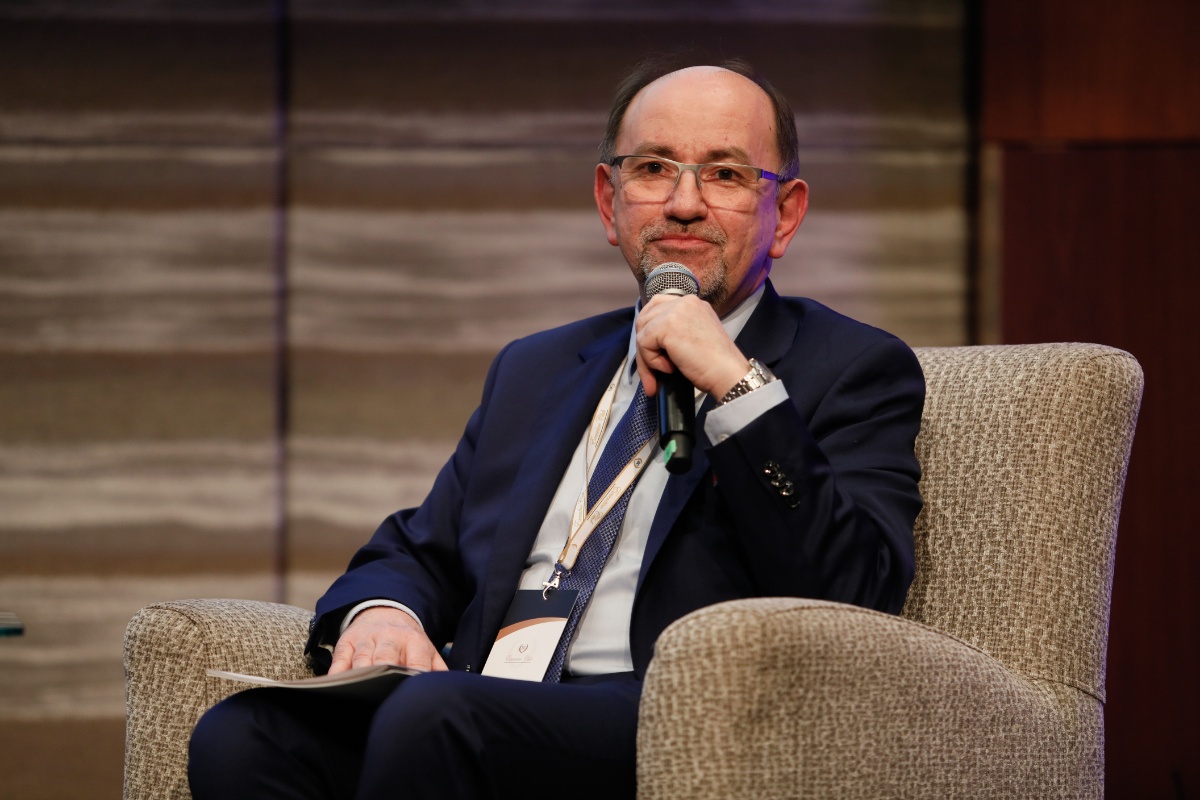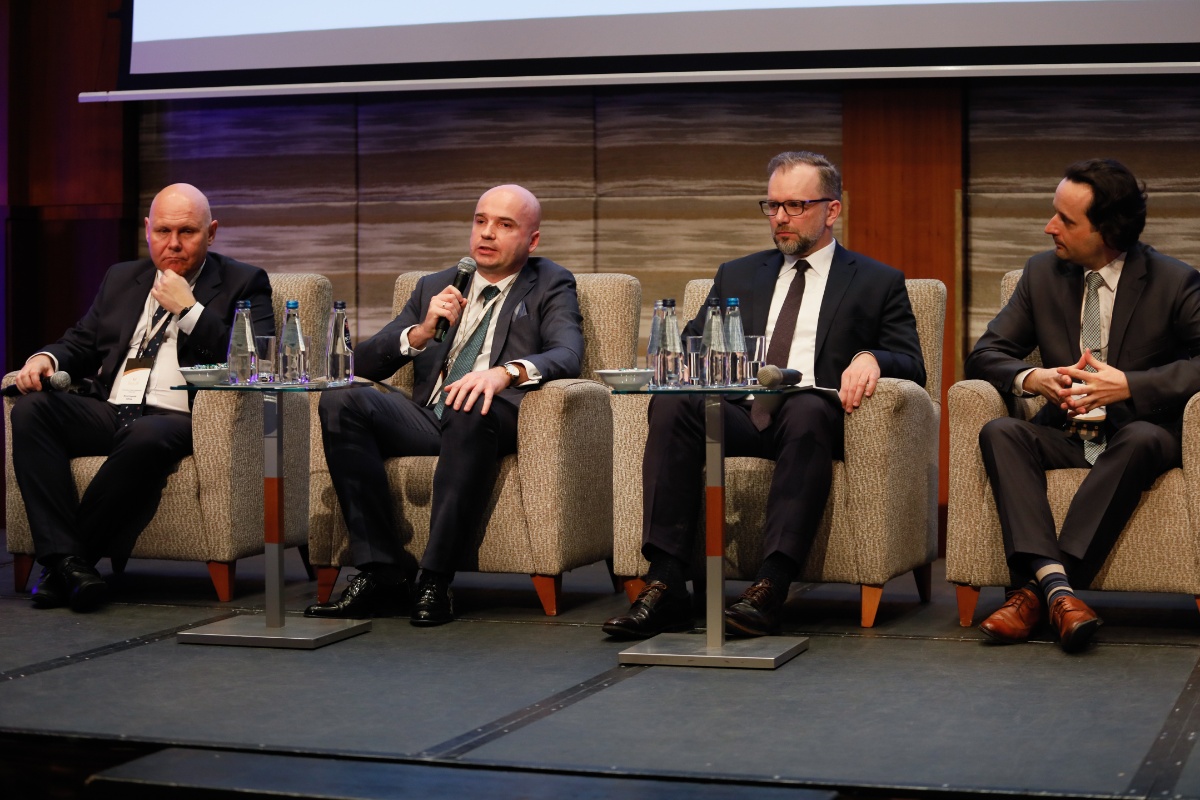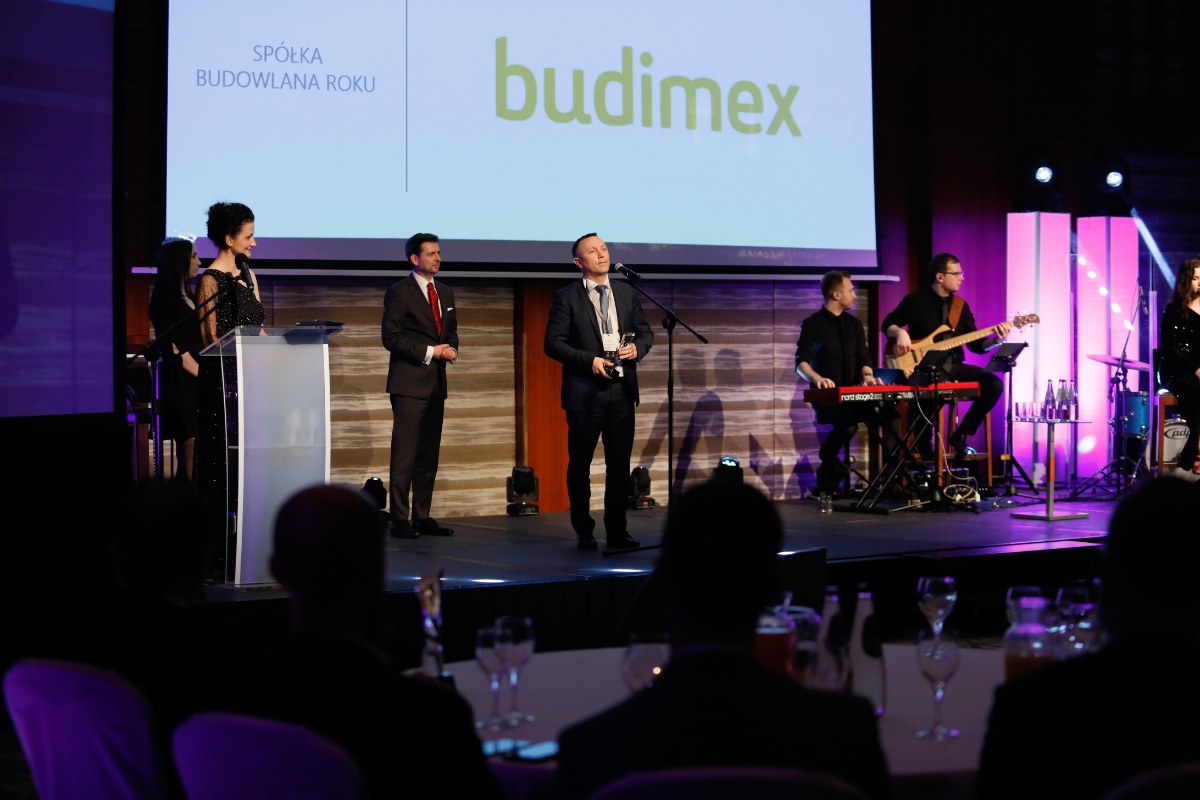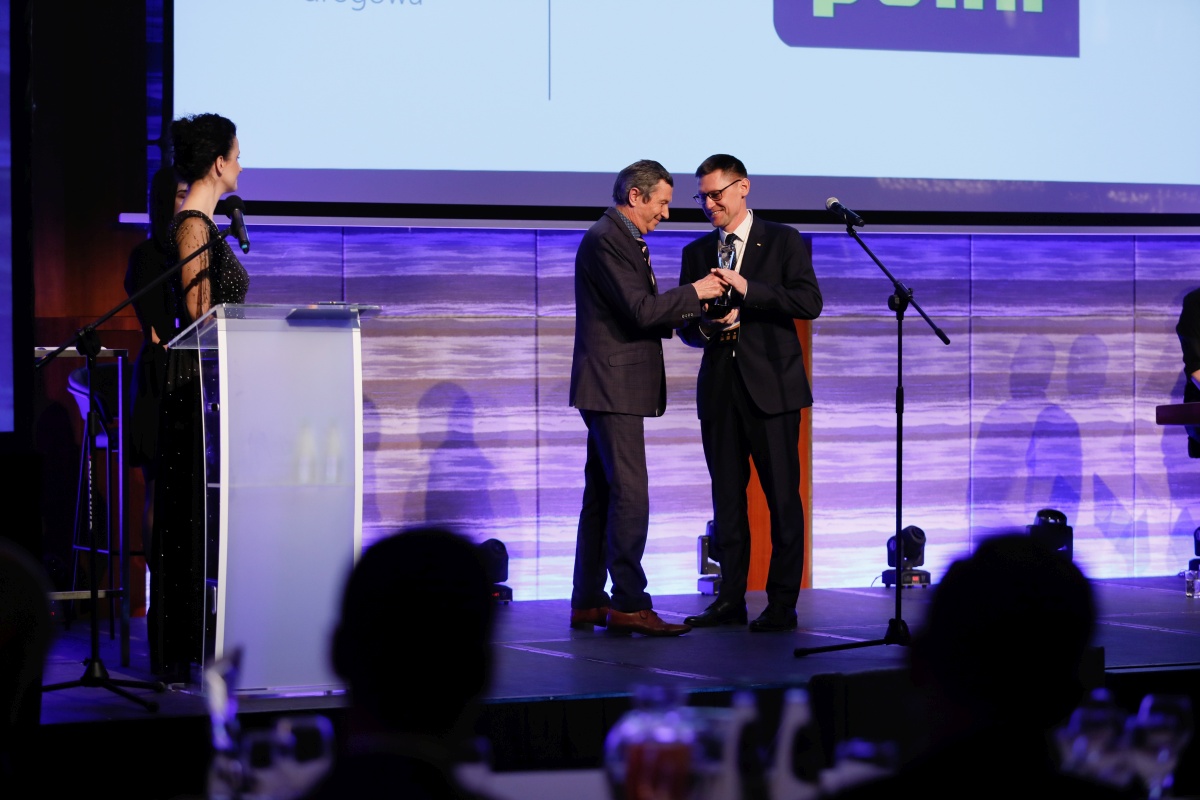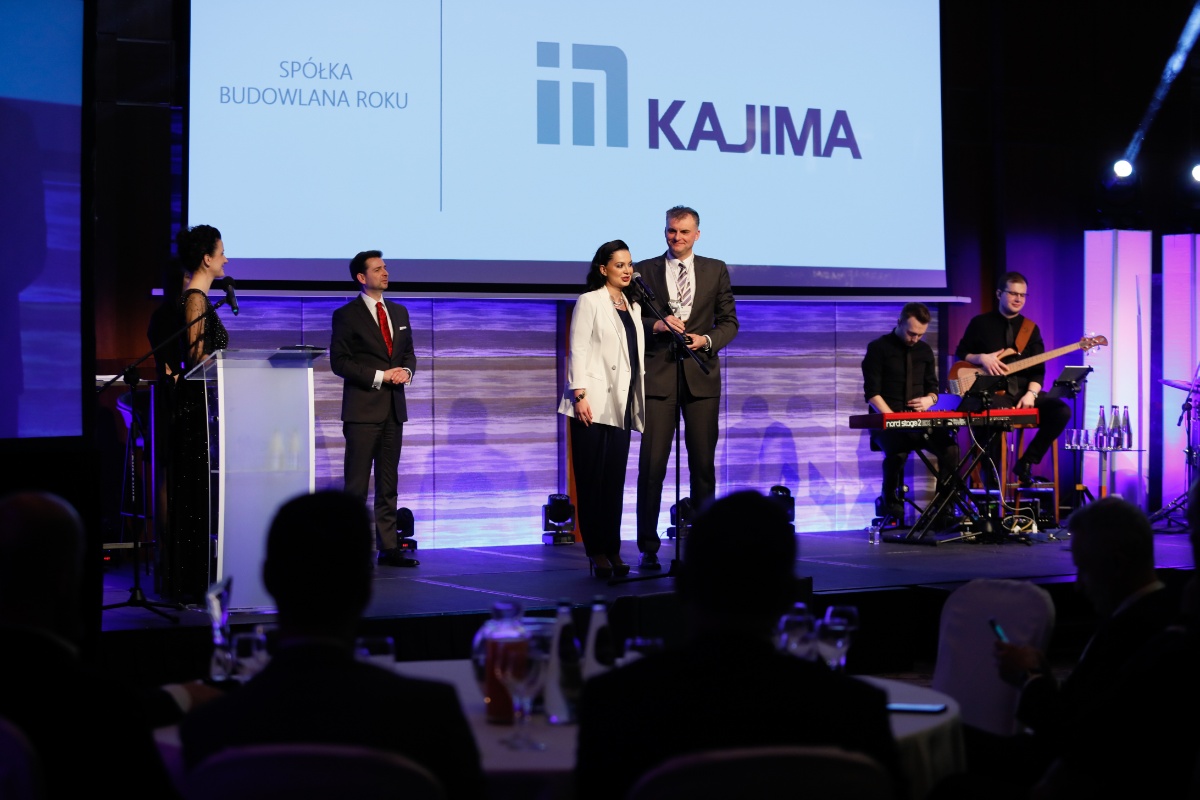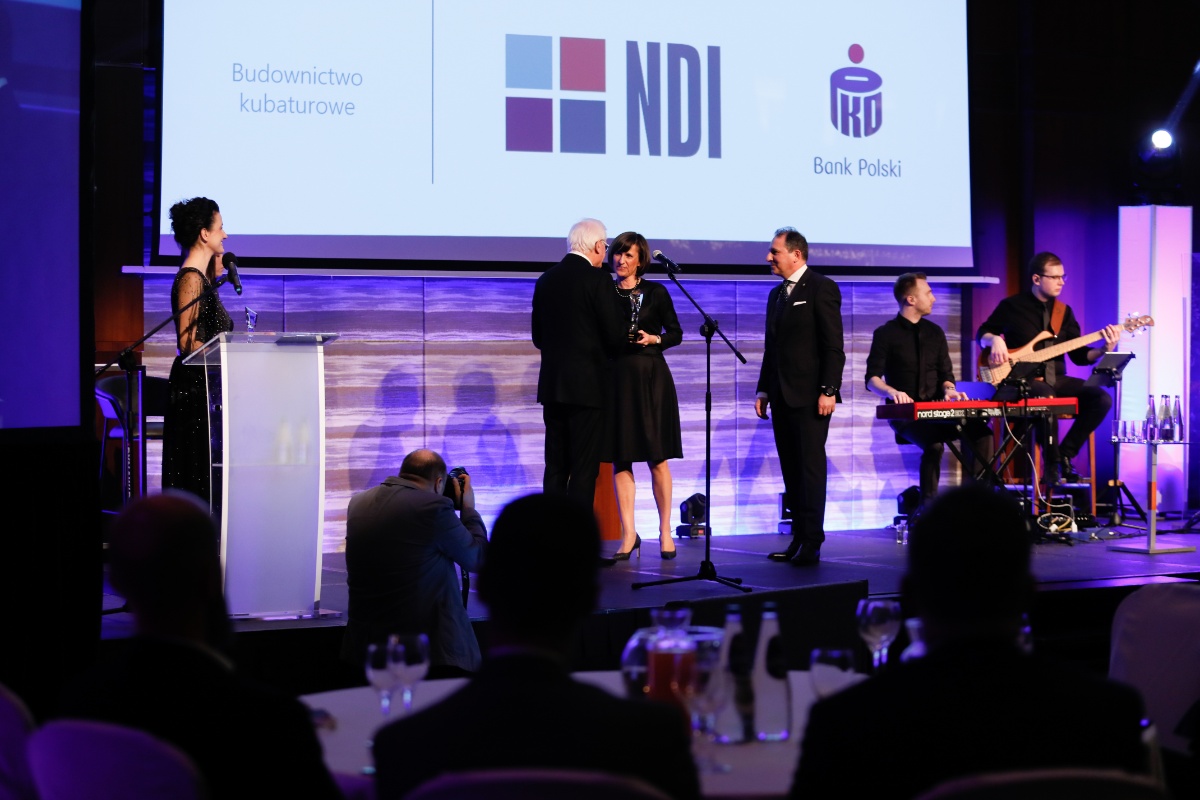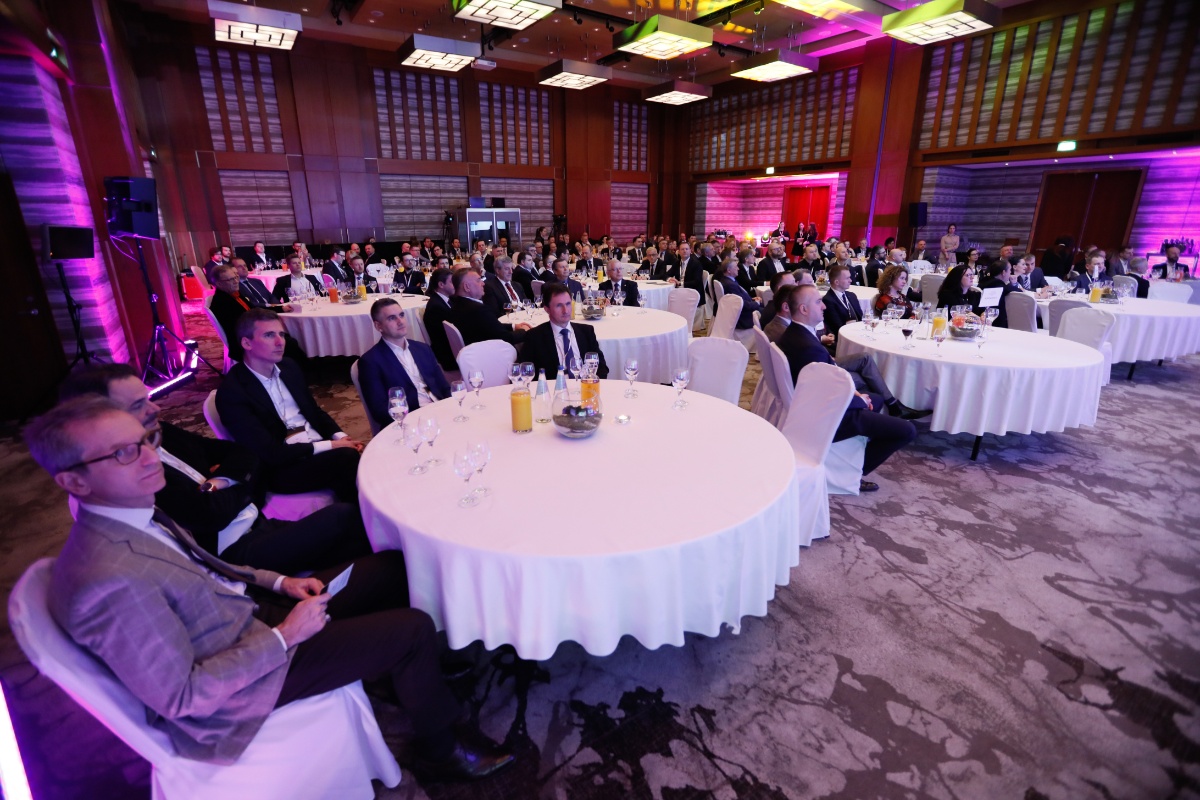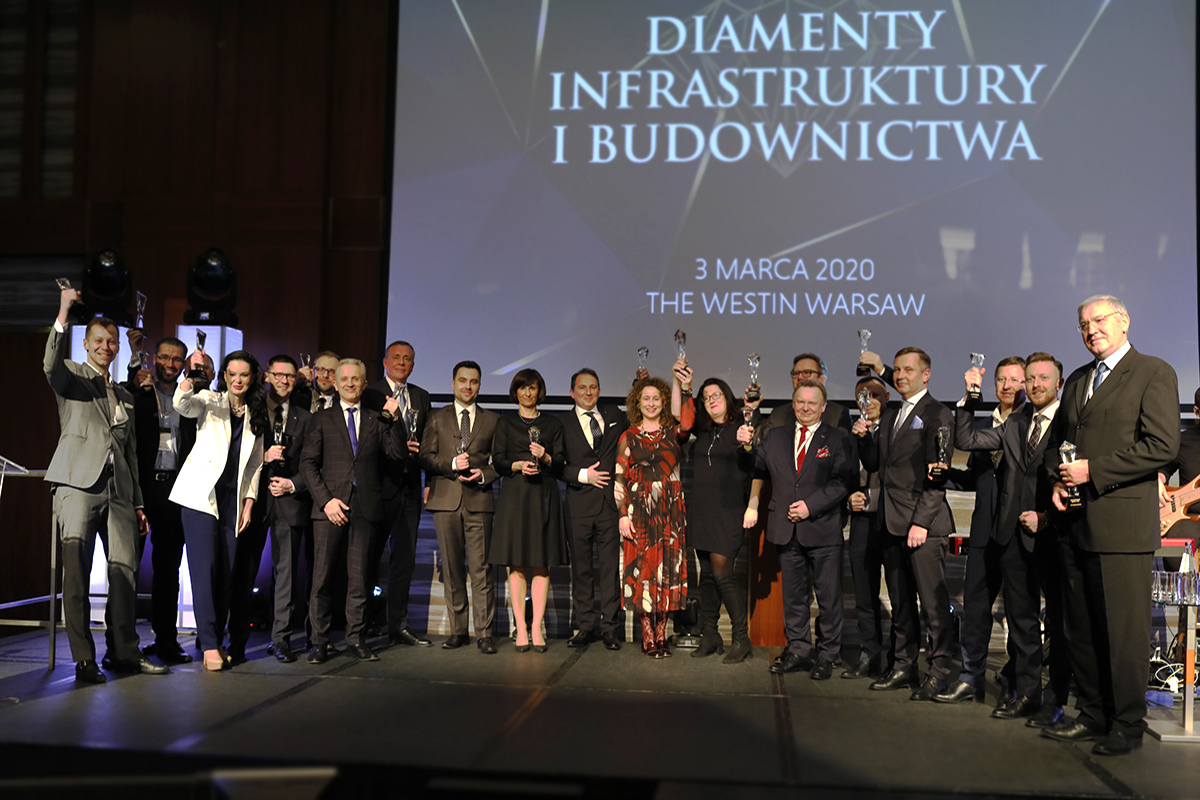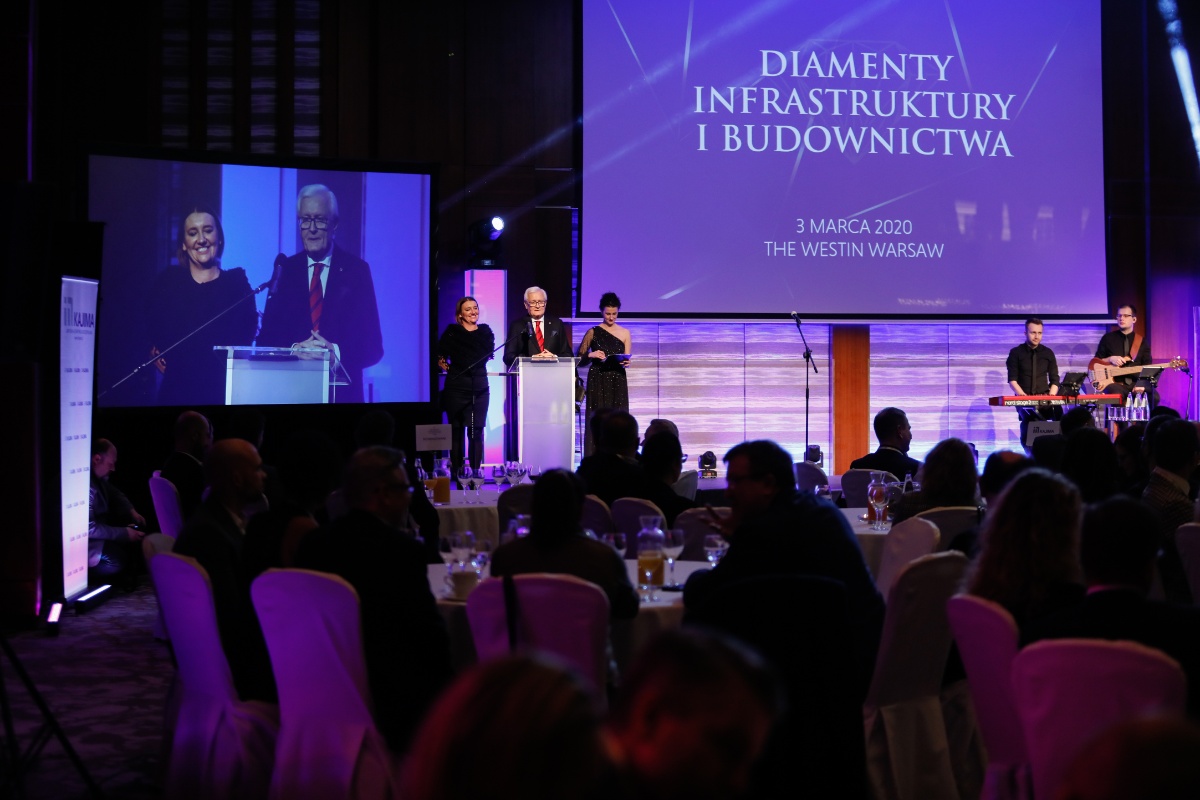
On March 3, at The Westin Warsaw hotel, we had the pleasure of organizing the 11th edition of the “Polish Infrastructure and Construction” conference. The invited experts discussed the most current issues during an all-day series of debates divided into three thematic discussion panels and two presentations. The highlight of the event was the evening gala of “Infrastructure and Construction Diamonds”, honoring the most outstanding entities in the industries. The conference was organized under the honorary patronage of the Ministry of Infrastructure.
The event was inaugurated by a speech of our special guest – dr Libor Lochman, Executive Director of the Community of European Railway and Infrastructure Companies (CER). The speaker introduced the concept of “green mobility”. It is the foundation of the so-called Green Deal, which is a set of political initiatives proposed by the European Commission, whose overarching goal is to make Europe climate neutral by 2050. Rail, as the greenest means of transportation, is to play a major role in this plan. This is a huge challenge, because the current share of road transportation is 75%, and emissions of harmful substances are still increasing. The intention of the European Commission is to transfer a significant part of road transportation to rail. The first actions taken in this direction are increasing the density and capacity of railway networks, modernizing rolling stock, and integrating train control systems.
After the speech we smoothly moved on to the first discussion panel, moderated by Jan Styliński – President of the Board of the Polish Association of Construction Industry Employers. The panelists included: Marta Midloch – Partner, attorney-at-law, co-head of infrastructure projects practice, WKB Wierciński, Kwieciński, Baehr; Hubert Nowak – President of the Polish Public Procurement Office; Adam Poliński – Director of the Infrastructure Department, UNIBEP SA; Tadeusz Sobotnik – Director of the Strategy Department, PKP Polskie Linie Kolejowe SA; Paweł Średniawa – President of the Management Board, PBDI SA; Bartosz Tokarski – Deputy Director of the Strategic Client Insurance Bureau, EIB SA; Tomasz Żuchowski – Acting General Director for National Roads and Motorways. The first topic raised was public-private partnerships. According to the panelists, there are still no large projects using this formula. Local authorities implement only small projects for fear of high costs and risk. There are still no examples “from above”, i.e. large implementations involving cooperation between companies and major institutions, especially since this framework gained a solid legal basis in 2018. This amendment was very well received by the industry, but frequent changes of law are still a big problem. Market fluctuation is another challenge that prevents real investment planning in the long run. In response to these challenges, all panelists unanimously called for the partnership to lead to the implementation of common goals and for all partners to see it as an advantage, not a zero-sum game. Finally, each of the speakers briefly talked about their dreams concerning the future of the industry. The most frequently used words were: partnership, efficiency, stability, and win-win.
After a short coffee break, we started the second panel, entitled “Dynamics of Rail Transport Development”. The moderator, dr Jakub Majewski – President of the ProKolej Foundation, invited the following panelists to the stage: Krzysztof Celiński – President of the Board, Siemens Mobility; Adam Laskowski – Member of the Board, PKP Intercity SA; dr inż. Jerzy Lejk – President of the Board, Metro Warszawskie; dr Libor Lochman, Executive Director of the Community of European Railway and Infrastructure Companies; Kamil Wilde – Vice President of the Office of Rail Transport. Maciej Ziomek – Associate Partner at Transaction Advisory Services, EY. The Green Deal was the first topic in the discussion as the factor that currently has the greatest impact on the industry. This is due to the fact that rail has become an object of enormous transformation as the most ecological and safest means of transportation. Transition to renewable energy, electrification of the network, replacement of rolling stock, and harmonization of control systems are just some of the elements of the European Green Deal. These changes also apply to Poland. According to the panelists, such large funding has never been invested in rail in its history, so this is a huge opportunity we should capitalize on. The number of passengers is also growing. In 2019 the Polish rail transported 335 million people, compared to 310 million a year earlier. More and more modern control systems are used as well, enabling trains to reach high speeds on their entire routes. Currently only the Pendolino train reaches over 200 km/h on the Central Rail Line. By 2050 high speeds are expected to apply to 8,000 km of rail network. In addition to linear infrastructure, it is also important to remember about nodal infrastructure, i.e. stations and rolling stock, whose average age in Poland is 32 years. Stable funding sources, including from the European Union, constitute an important element of the development of railway and metro infrastructure in Warsaw. In summary, for all these positive changes to be effectively implemented, and for Poland to finally have a modern and integrated railway system, we should invest over PLN 30 billion.
After a break, it was time for the second presentation of the day, entitled “Dynamic simulations in infrastructure: railways, roads, airports”, delivered by Filip Polit – Domestic Sales Manager, FlexSim InterMarium. The presentation was focused on a technology that enables optimization of planned investments, using the example of the Kraków Balice airport. The presented simulation, which was a virtual representation of the actual system, allowed to analyze and check the proposed improvements in detail. With the use of simulations it is easy to determine which system is optimal and can contribute to an increase in efficiency, reduce losses, increase revenues, or reduce costs.
The third and last discussion panel concerned new technologies in construction. It was moderated by Wiktor Piwkowski – Member of the Board of the Polish Association of Construction Engineers and Technicians, and the panelists included: Maciej Kopański – Investment Director, BaltCap; Member of the Board, IZIM; Andrzej Losor – Sales and Marketing Development Director, Górażdże Cement SA; Wojciech Znojek – Vice President of the Board, SABUR Systemy Automatyki; Przemysław Janiszewski – Vice President of the Board, Polimex-Mostostal SA; Jordan Zafirow – attorney, WKB Wierciński, Kwieciński, Baehr. The sustainable development of enterprises in the industry as well as their energy efficiency and reduction of negative impact on the environment was an important part of this expert discussion. The cement industry in Poland is a pioneer in this type of activities. It is considered to be very modern and energy-efficient, but above all it implements the idea of circular economy, as it manages as much as 50% of municipal waste. According to the panelists, in order to effectively reduce the negative impact of the industry on the environment, three elements should be maintained during investments: planning, digitization, and automation. They can limit the emission of harmful substances, while modern solutions, such as BIM, allow continuous access to detailed information about the project. At the moment, both in the industrial and construction spheres, the decisive factor is the growing awareness. This seems encouraging, because companies give up high short-term profits in favor of a long-term, responsible strategy.
After the discussion panels and speeches filled with interesting exchanges and huge amounts of expert knowledge, there was time for the main part of the event. It was the evening gala of “Infrastructure and Construction Diamonds”, honoring the companies and individuals who stand out in the industry with their exceptional actions and achievements. This year 20 diamonds were awarded in 9 categories.
Realization of the Year – General Construction
Winners:
ERBUD SA for the construction of Galeria Młociny
NDI SA for the construction of Rotunda in Warsaw
In this category, the Jury also decided to award the investor of Rotunda – PKO Bank Polski SA
Realization of the Year – Road Infrastructure
Winner: PORR SA for the construction of facility no. 21 along the S7 expressway – the highest overpass on “Zakopianka”
Realization of the Year – Rail Infrastructure
Winner: Przedsiębiorstwo Usług Technicznych Intercor for the modernization of the Sadowne-Czyżew route, part of the Rail Baltica route
Distinction: MERX and T4B consortium – modernization of the railway station in Czeremcha
Construction Company of the Year
Winner: BUDIMEX SA
Distinction: Kajima Poland
Technology Leader
Winner: HB Reavis Poland
Distinction: Ghelamco Poland
Security Leader
Winner: Layher
Sustainable Development Leader
Winner: Górażdże Cement SA
Advisor of the Year
Winner: KKLW Kurzyński Łyszyk Wierzbicki
Distinction: WKB Wierciński, Kwieciński, Baehr
Financing Entity of the Year
Winner: Bank Gospodarstwa Krajowego
Foreign Expansion Leader
Winner: UNIBEP SA
Distinction: Polimex-Mostostal SA
Personality of the Industry
Winners:
Leszek Marek Gołąbiecki – President of the Board, Unibep SA
Ireneusz Merchel – President of the Board, PKP Polskie Linie Kolejowe SA






